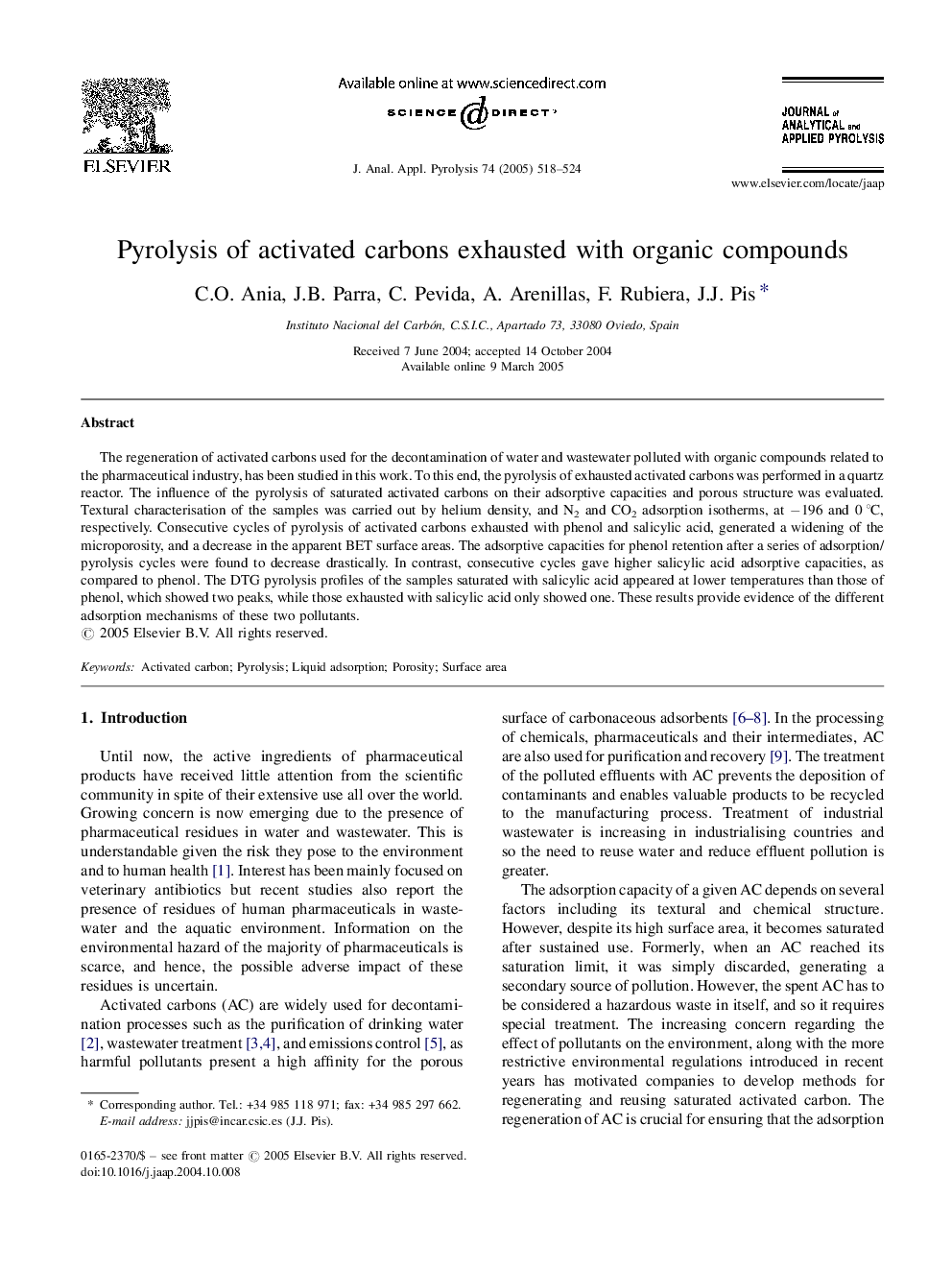| Article ID | Journal | Published Year | Pages | File Type |
|---|---|---|---|---|
| 9748229 | Journal of Analytical and Applied Pyrolysis | 2005 | 7 Pages |
Abstract
The regeneration of activated carbons used for the decontamination of water and wastewater polluted with organic compounds related to the pharmaceutical industry, has been studied in this work. To this end, the pyrolysis of exhausted activated carbons was performed in a quartz reactor. The influence of the pyrolysis of saturated activated carbons on their adsorptive capacities and porous structure was evaluated. Textural characterisation of the samples was carried out by helium density, and N2 and CO2 adsorption isotherms, at â196 and 0 °C, respectively. Consecutive cycles of pyrolysis of activated carbons exhausted with phenol and salicylic acid, generated a widening of the microporosity, and a decrease in the apparent BET surface areas. The adsorptive capacities for phenol retention after a series of adsorption/pyrolysis cycles were found to decrease drastically. In contrast, consecutive cycles gave higher salicylic acid adsorptive capacities, as compared to phenol. The DTG pyrolysis profiles of the samples saturated with salicylic acid appeared at lower temperatures than those of phenol, which showed two peaks, while those exhausted with salicylic acid only showed one. These results provide evidence of the different adsorption mechanisms of these two pollutants.
Related Topics
Physical Sciences and Engineering
Chemistry
Analytical Chemistry
Authors
C.O. Ania, J.B. Parra, C. Pevida, A. Arenillas, F. Rubiera, J.J. Pis,
